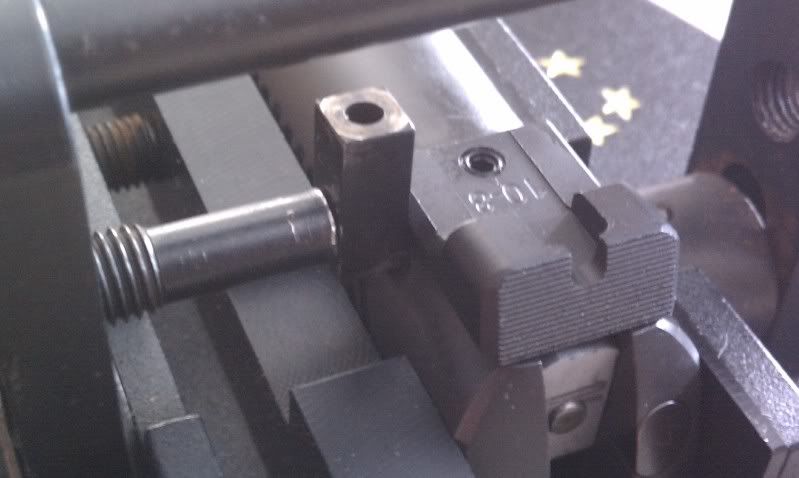Yet another topic I get asked about. I'm not a professional photographer, but have done freelance work in the past. With that out of the way, let's get to it.
Here's the equipment that i typically use:
Nikon D300
Nikkor 17-55mm/f2.8
Alien Bee's lights (B800 and B400's)
24"x 36" Softbox or Beauty Dish
Grid's (narrow the side light beams)
Pocket Wizards (used to trigger lights)
Gels (these are used for color)
light stands
background material
Sekonic L-358 light meter
Depending on the look you want, you can get by with 1 light. You don't neccissarily need expensive lights, I've taken photo's in the past using shop lights and white nylon rip-stop fabric from a fabric store. This photo was taken with a single light (B800) directly above the gun. A little secret is that if you look at the rivets on the case or at the slide stop, you can usually see how many lights are used. I usually shoot the photo's at f11-f13 (apeture), 200iso and 1/250" (shutter speed) , which is what my light meter displays.

For multi-colored light setup's, I still use the single light above, but now I add lights to the side. I prefer to use grids, so that the light from the side is narrower, which also allows me to focus where the beam is going. I have a 10* and a 20* grid, but would recommend 10* grids, which I need to buy another. My lights have can be turned on so that I can adjust where the light is going to end up, which makes it a little easier to position. Gels are used to add color to the photo. In the photo's below I chose red and blue, which give it a feel of lights on a Police car.
Here is a photo of the setup. It looks like I'm in a complete dark room, but it was actually a cloudy day out and when using lights (strobes), you can over-power the sun.
Here's a photo from the setup shown above
Now the last little tip that i have is how to get the light from the weapon light to appear in the photo. It's fairly simple when using lights (strobes), just change the shutter speed. I dropped the shutter speed from 1/250" down to 2" or 3".
Here's a link that is helpful for doing "product" photography.









